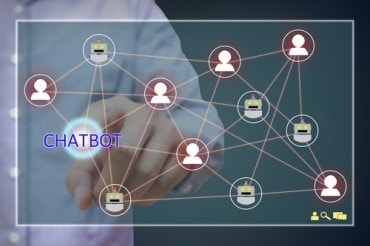
AIOps promises to serve a broad range of needs and use cases in enterprise IT.
Few in the IT sector should be surprised to learn that AIOps adoption is on a steep growth curve and will continue to grow for a few more years. Earlier this year, Gartner said that AIOps in the IT operations management market will grow at a compound annual growth rate of 15% per year through 2025 from more than $1 billion in 2020.
So, why are so many organizations turning to artificial intelligence (AI) and machine learning to help them manage their IT infrastructure, security and operations? The reasons, the driving factors, and the use cases are as varied as the natures and needs of the thousands of enterprises doing business across the US.
Download Now: 2021 Gartner Market Guide for AIOps PlatformsThe use cases include IT security – threat identification and response — cloud management, support for work-from-home, application performance management, network management, DevOps, and incident management.
That broad range of use cases is one reason why 94% of 500 IT decision makers responding to a recent survey said AIOps adoption is important or very important to managing networks and cloud services. That research was conducted by ZKResearch for Masergy. It found that 64% of companies were already using AIOps, with more than half (55%) using it for both network management and security.
Why adopt AIOps
Some observers see AIOps as a means to save money on IT staff, but it’s becoming clear that the key driving factor is complexity. Enterprises and their individual employees and customers are increasing their demands for computer services and data on essentially an exponential basis. We’re using our computers more. We rely more on data, expecting an instantaneous response. We want to work anywhere/anytime.
Even where companies have turned to cloud computing, they are relying on multiple clouds and a mix of multiple cloud services and legacy systems. AIOps and observability wade through complexity and provide insight into the state of those IT systems.
We have more and more devices – in on-premise or cloud deployments – broader networks, more applications, and massive flows of data. Companies face more external threats, and less tolerance for system failures. All that combines to make IT operations management too big a job for mere humans alone. The future of IT operations and security shapes up as a blend of AI and machine learning. At minimum AIOps provides advanced system monitoring and incident detection, with people defining parameters and performance goals, and remediating issues that arise.
Even if IT went back to primarily human operations, leaders would be challenged in finding enough qualified candidates to fill out their staffs. Today, job boards are populated with unfilled IT job postings. Dice.com lists more than 28,000 open “IT operations” jobs in the US. It also lists almost 7,000 “DevOps” openings, and 11,000 “IT security” posts.
So, IT decision-makers have to consider the benefits that AIOps adoption can deliver.

Insight into IT systems
In a recently published interview, Sean McDermott, CEO and founder of Windward Consulting, said, “Use cases for AIOps adoption are accelerating rapidly, such as infrastructure and application monitoring, event management, correlation and root-case analysis, and incident management. These are all massive data processing use cases, so the application of AIOps and machine learning makes sense.”
He added that AIOps is typically “for understanding relationships between events and predicting infrastructure failure points or degradation of service from applications”.
McDermott said, “The biggest ROI now is around service availability and critical service uptime.”
That’s where IT pros are challenged by the complexity of their environments. The IT world is marked by a mix of multiple cloud infrastructure services, applications as a service, and internal data centers. New applications are added almost daily, with a trove of data supporting each. Meanwhile, some other applications and core technologies may be a decade or more old.
AIOps’ promise isn’t just to help IT teams respond to outages and performance bottlenecks. Perhaps the greatest value is in using predictive analytics to identify and prevent upcoming failures.
It comes down to data
Those analytics require large volumes of data. The complex IT environments, with thousands of user devices, applications, servers, and network elements certainly generate plenty of data. Systems run and feed monitoring systems on a 24×7 basis. There’s data on hardware uptime, application performance, system usage, and more. AIOps, particularly when paired with observability, can help IT teams see what is really happening within their environment.
AIOps correlates data drawn from multiple sources, including logs, and issues alerts when systems show signs of a slowdown, a breach attempt, or impending system failure. How those alerts are handled depends on the criticality of the alert, and on the needs and resources of an organization. Remediating an issue may mean a human operator issues a fix when it’s feasible, when they “get a chance”, or the AI system increasingly may be programmed to take automated steps.
Download Now: 2021 Gartner Market Guide for AIOps PlatformsAt a minimum, AIOps should be able to mitigate the flood of alerts that operators must deal with. The technology also promises to improve system and application uptime. Another result is that IT team members can free up more time for innovative work by reducing the time spent on routine maintenance. In the end, the business benefits by having systems that are more reliable and more efficient.






